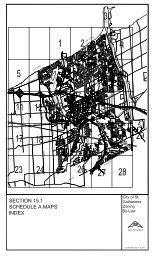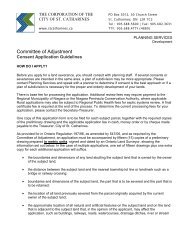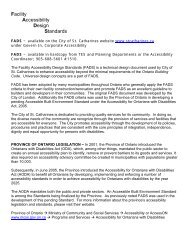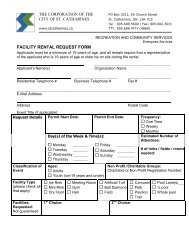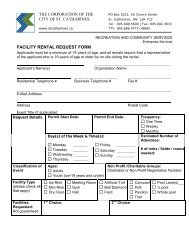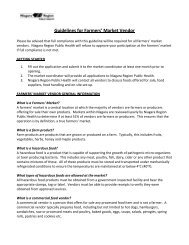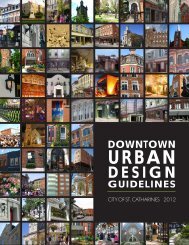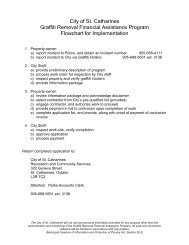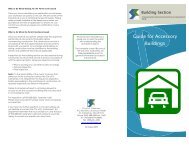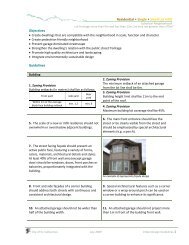2008 Fire Master Plan - City of St. Catharines
2008 Fire Master Plan - City of St. Catharines
2008 Fire Master Plan - City of St. Catharines
You also want an ePaper? Increase the reach of your titles
YUMPU automatically turns print PDFs into web optimized ePapers that Google loves.
FIRERESCUE6.1 Em e rg e n c y Response Pro t o c o l sThe manner in which we recall our Officers and or <strong>Fire</strong>fighters is through the following notification process:Limited number <strong>of</strong> <strong>of</strong>f – duty firefighters carry recall pagers on a voluntary basis. When required by IncidentCommand, the dispatcher activates the pagers and requests a number <strong>of</strong> firefighters and <strong>of</strong>ficers to call in to thealarm room. When enough staff responds, the dispatcher tells anyone else that calls in that they have enough staffcoming in. If not enough staff call in, the dispatcher will call all those on the recall list and/or call <strong>of</strong>f-duty firefightersin order to get enough staff.The frequency and our ability to resource multiple or simultaneous emergencies with their associated IncidentCommand issues including large scale incidents have not been a regular occurrence. Many structure fires requirean extra pump or two in order to control the fire and provide for relief <strong>of</strong> firefighters on scene. We will maintain aminimum response <strong>of</strong> 13 firefighters at every structure fire.6.2 Em e rg e n c y Response CategoriesThe following responses are what is programmed in our computer assisted dispatch in order to assist us in decidingwhich vehicle is responsible to respond to which type <strong>of</strong> call. We have included the vehicle type and the number<strong>of</strong> firefighters that are responding for each emergency. The Ontario <strong>Fire</strong> Marshal (OFM) and the National <strong>Fire</strong>Protection Association (NFPA) recommend 4 firefighters on a single pump to begin any type <strong>of</strong> interior firefighting or rescue.Currently, <strong>St</strong> <strong>Catharines</strong> staffs all it’s pumps with 3 man pump crews due to limited staffing levels. This staffingarrangement significantly impacts the first arriving pump crews ability to effect any type <strong>of</strong> limited rapid rescueor limited interior firefighting.Interior <strong>Fire</strong> Fighting and RescueOur normal response to any fires will find a response <strong>of</strong> 4 Officers and 9 firefighters to most occupancy (3 pumps,1 aerial, and 1 command vehicle). Institutional or high rise occupancies over 6 stories get a higher level <strong>of</strong> initialresponse when we add either another aerial or pump to the response. Many discussions have occurred over the yearson our ability to meet the FMO 13+10 rule and we are meeting it 96% <strong>of</strong> the time. The concern is the time it is takingus to have 4 firefighters on the scene so we are able to begin fire suppression or rescue. In most cases this initialresponse is critical to saving a life or controlling a fire.A crew <strong>of</strong> four is required to make a safe initial attack on a fire, with a crew <strong>of</strong> two working inside the burningstructure and a backup crew <strong>of</strong> two standing by to assist as necessary. This is known as the CanadianOccupational Safety and Health “2 In/2 Out’ regulation.38ST. CATHARINES, FIRE SERVICES




